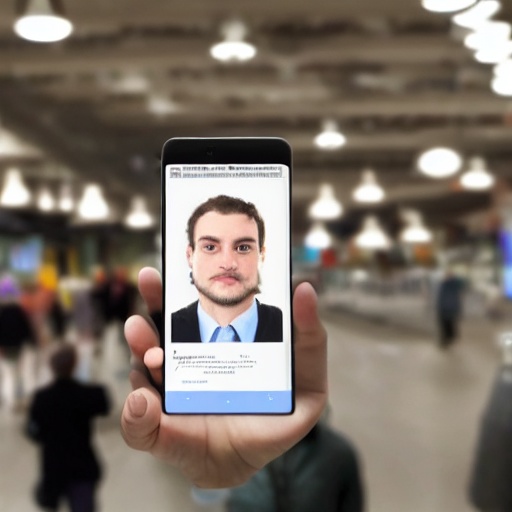
How will the proposed regulations in China impact the use of facial recognition technology by businesses?
The proposed regulations in China will have a significant impact on the use of facial recognition technology by businesses. Firstly, businesses will be required to obtain individual consent before using facial recognition technology, which ensures that individuals have control over the use of their personal biometric data. This will establish a higher standard for privacy protection and prevent the unauthorized use of facial recognition technology. Additionally, the regulations encourage the use of non-biometric verification methods if they can achieve a similar purpose. This opens up opportunities for businesses to explore alternative solutions that do not rely on capturing facial data, providing more options for privacy-friendly identification and verification processes. Overall, the regulations will promote responsible and ethical use of facial recognition technology, enhancing privacy and safeguarding individuals’ rights.
What are the potential benefits and challenges of using non-biometric verification methods instead of facial recognition technology?
Non-biometric verification methods offer potential benefits and challenges compared to facial recognition technology. One of the advantages is the reduced risk of privacy infringement. Facial recognition technology relies on capturing and storing individuals’ biometric data, which can be vulnerable to misuse and hacking. Non-biometric methods, such as Traces AI’s privacy-friendly tracking solutions, focus on other physical attributes and do not store personal biometric data, thus minimizing privacy concerns. Additionally, non-biometric methods can mitigate issues related to bias and discrimination. Facial recognition technology has been found to perform differently across demographic groups, leading to unfair treatment. Non-biometric methods that do not rely on visual appearance can help address these biases and promote equality. However, there are also challenges associated with non-biometric verification methods. For example, they may require additional infrastructure or specialized technology, which can be costly for businesses to implement. Furthermore, non-biometric methods may have limitations in terms of accuracy and reliability. Overall, while non-biometric verification methods offer privacy-friendly alternatives to facial recognition technology, their implementation may require careful consideration of costs and performance.
How can the development of privacy-friendly tracking solutions address concerns about the abuse and privacy implications of facial recognition technology?
The development of privacy-friendly tracking solutions can address concerns about the abuse and privacy implications of facial recognition technology. Traces AI’s technology, for example, blurs out all human faces in frame and relies on other physical attributes for tracking individuals. This approach ensures that individuals’ privacy is protected while still enabling effective tracking and identification. Privacy-friendly tracking solutions like this can alleviate concerns about the unauthorized use of facial recognition technology and the potential misuse of personal biometric data. Additionally, privacy-friendly tracking solutions can help mitigate issues related to bias and discrimination. By not relying on visual appearance, these solutions reduce the potential for unfair treatment based on physical characteristics. Furthermore, privacy-friendly tracking solutions can contribute to building public trust in the use of tracking technologies. When individuals feel that their privacy is respected and protected, they are more likely to adopt and accept such technologies. Overall, the development of privacy-friendly tracking solutions is a crucial step in addressing concerns and ensuring responsible and ethical use of facial recognition technology.
Full summary
The Cyberspace Administration of China has recently released draft rules aimed at regulating the use of facial recognition technology by businesses. These rules propose a set of guidelines that businesses must adhere to when utilizing facial recognition technology. The main objective behind these rules is to ensure the privacy and safety of individuals while using this technology.
According to the draft rules, businesses will be required to obtain individual consent before using facial recognition technology. This consent must be specific and should clearly state the purpose for which the technology will be used. Additionally, the rules encourage the use of non-biometric verification methods if they can achieve a similar purpose. This allows businesses to explore alternative solutions that do not rely on capturing facial data.
However, the rules also recognize that certain administrative situations may not require individual consent. This is particularly important in cases where the use of facial recognition technology is necessary for public safety or national security reasons. In such situations, businesses are encouraged to utilize national systems for facial recognition.
Furthermore, the installation of image collection and personal identification equipment in public places should primarily be for the purpose of maintaining public safety. This ensures that facial recognition technology is used responsibly and does not infringe upon individuals' privacy.
In addition to the regulations proposed by the Cyberspace Administration of China, several other developments in the field of facial recognition technology have been observed. Traces AI, a computer vision startup, is pioneering privacy-friendly tracking solutions. By blurring out all human faces in frame and relying on other physical attributes, Traces AI offers an alternative approach to tracking individuals without compromising privacy. Their technology has proven to be particularly useful in closed venues with limited data on individuals present.
Moreover, Traces AI's solution has demonstrated its effectiveness in finding lost children in amusement parks. With just a verbal description, their technology can identify and locate a child, eliminating the need for facial recognition. This showcases the potential of alternative tracking methods that prioritize privacy.
Additionally, Traces AI's technology addresses racial bias in computer vision systems. By intentionally blurring faces, their solution reduces the potential for discrimination based on visual appearance. This advancement is crucial in ensuring fairness and equality in the use of facial recognition technology.
The developments in China also include the introduction of facial recognition technology that can identify faces even when individuals are wearing masks. This innovation further enhances the capabilities of facial recognition and expands its potential applications.
However, with the rapid advancement of facial recognition technology, concerns regarding its abuse and privacy implications have emerged. To address these concerns, China has been implementing regulations under the Cybersecurity Law and the Personal Information Security Specification. Additionally, a new data privacy law with a focus on biometrics is currently being drafted. These measures aim to establish clear guidelines and safeguards for the use of facial recognition technology.
In the United States, the market for facial recognition technology has grown significantly in recent years. The technology has found applications in various sectors, including authorizing payments and tracking attendance. However, studies have indicated that the performance of facial recognition technology varies across different demographic groups. It tends to perform better on lighter-skinned men and worse on darker-skinned women. Similar discrepancies have also been observed among children and elderly adults.
Efforts are being made to mitigate these performance differences among demographic groups and address privacy concerns. Privacy frameworks have been developed by industry groups, and some federal and state laws, such as the EU's General Data Protection Regulation, impose requirements on U.S. companies. However, there is currently no comprehensive federal privacy law governing the use of facial recognition technology.
In conclusion, the proposed draft rules by the Cyberspace Administration of China mark an important step towards regulating the use of facial recognition technology. These rules aim to protect the privacy and safety of individuals while encouraging businesses to explore alternative methods that prioritize privacy and mitigate bias. The developments in the field, such as Traces AI's privacy-friendly tracking solutions and advancements in identifying faces even with masks, further contribute to the evolution of facial recognition technology. It is crucial for governments and businesses to ensure ethical and responsible use of this technology to maintain public trust and safeguard individual rights.







